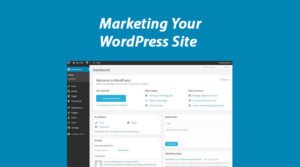10 Types of Content that We ALL Love!

When it comes to successful content marketing, we all know by now that content that pushes people’s buttons and makes them “feel” (as cheesy as that may sound) is the kind of content that gets shared.
The problem is, sometimes we as bloggers just don’t have a clue on what to write about!
Writer’s block happens even to the best of us, and it’s nice to help break through this “stalling” of our creativity with a good list of content types that people crave.
Today, I’ve put together a list of 10 content types that people just love to read, in hopes that one might serve as inspiration for you to create some “Wow!” content in your own niche.
1.) Content that reminds us, “It’s possible”
If you’re going to create inspirational content, remember that this is one of the styles that people love the most.
Jeff Goins is known for doing this well (at least in my humble opinion) in his pursuit to convince people that they are writers, and the first step is to believe in themselves.
The thing to avoid here is selling “fluff”, skyhooks, and unrealistic dreams.
The thing to do is to motivate people to overcome their fears of getting started, and encourage them (with actual advice!) on how to take the first step.
Warn them of the trials to come, but reassure them it is possible.
You can be the person that influences a big project if you use the right words and can guide those looking for a direction to the right path.
2.) Content that fixes a specific problem
A huge majority of blog posts tell you that they are going to solve a problem, but often times they are just too vague to get anything really useful done.
This is especially noticeable in the “blogging about blogging” world: “Oh, you promise to get me more traffic, huh?”
Then the post is about generic tips that pretty much every blogger knows about.
The fix?
Teach people something very specific!
If they learn one thing from your post, and it’s useful, they will remember you.
Sean Davis is very good at this, he creates Thesis tutorials and other specific web design tips like how to style an AWeber form.
Sean himself noticed this and commented about it:
When I stopped giving people great advice and started teaching them how to do something specific, my comments quadrupled.
— Sean Davis (@SDavisMedia) June 10, 2012
So, what specific, actionable advice could you be teaching people?
3.) Content that motivates us to action
The above being said, content that gets people to take action is also very useful and has a purpose in your content marketing efforts.
The main thing here is to get away from “hoo rah!” content that just makes people feel good and started creating motivating content that gets people to take a single, positive action for themselves.
I’ve covered how research has shown folks are unlikely to take action even if they are afraid without proper instructions.
A quick formula for creating this content is:
- Inspire the reader
- Lay the plan
- Dictate the directions
With motivation, a general plan, and specific first steps to take, you can guarantee that people will actually follow your advice, and when you give good advice, they’ll remember you for it.
4.) Content that makes us laugh (or happy)
People simply love content that’s going to make them feel good.
That’s why goofy sites like 9Gag (no I am not linking to that) can be so popular: humor goes a long way to satisfying people’s entertainment needs.
I should know, I run two entertainment blogs myself, a recent endeavor called That Space Bass has taught me that you can really “change people’s lives”… even with entertaining content!
How so?
Well, for my site, I’ve received emails from people who have said that I’ve, “Totally changed their taste in music”, it’s nice to know a guy with a computer can have that kind of impact, even a few weeks in!
How can you do the same?
If your content is of the entertainment variety (and all of it should be in some sense), be sure to tap into the taboo, what’s on people’s minds right now, and to add some insight into the “mundane” things that are sometimes funny in our lives.
Mattew Inman (from TheOatmeal) gives a great Ted Talk on this very subject.
5.) Content that reveals “secrets”
Giving away “the goods” always gets people fired up.
The thing is, you don’t need to be coming up with never before seen information in order to reveal a ‘secret’, the information just needs to be not totally obvious.
Take for example, this post on how waiters increased tips by 23% by using mints.
The psychology study mentioned was by no means a secret, but it’s not something that nearly enough people know about to make it “duh” information.
For many people, it was new information, and revealing the secret involved made it a successful post.
If you can find this type of info (or create it by using information you’ve gathered from a case study), you are one your way to a dynamite post that people will love.
6.) Content that tells us a story
Storytelling is a key aspect of good content marketing.
Sean Platt has a great quote on the matter:
The first thing to do when you’re telling a story is to not address a mass of “readers”, but rather treat your reader as an individual.
You like it when people talk to you directly, don’t you? 😉
Weaving a great tale (and a truthful one!) is so critical to building a thriving audience online; without a good story to tell behind your blog, you’re just another website with information.
Let people connect with you, they want to, so make it easy for them by creating content that tells a good story.
7.) Content that satiates our topical passion
The best way to create a unique selling proposition that sticks is to come up with a unique “twist” and provide that twist to an audience with a huge passion for a topic.
This means you also need to create pillar content, which is that super in-depth (and super long, prepare your typing fingers!) kind of content that just covers a topic in a totally exhaustive style.
The thing is, lots of smart folks are doing this in areas outside of blogging, such as how Dan Carlin creates his Hardcore History podcast.
Dan is knowing for creating quality content with a ton of personality (his USP), but he’s also not afraid to go big: here’s a podcast he did that’s nearly 3 hours on The Dark Ages of Eurasia.
You might look at that and say, “Who cares?”, but to Dan’s history obsessed audience (*ahem*, right here!), this was an A-Z superb piece of content on a very large span of history.
8.) Content that challenges our assumptions
Most people would assume that it would be impossible to travel around the world for 8 years straight….
Yet over at Fluent In 3 Months, Benny shows us that not only has he been doing it, but he showcased a ton of life lessons he learned along the way.
(That post has had hundred of thousands of shares… any wonder why?)
Find an assumption that people have in your niche (or in general).
Find data, examples, or life experience that really puts forwards a good case as to why those assumptions are wrong.
People always get fired up when you go against the grain, it’s time to let your content ruffle some feathers.
9.) Content that visualizes information
People LOVE images.
Recently, however, marketers have found that people really love information images, or what I like to call information visualization (because, you know, it rhymes!)
Things like infographics, “shareables”, and slideshows are all great ways to take information and put it in a concise visual format.
Below I’ve included a sample of taking a short blog post and turning it into a slideshow.
You might be surprised to find that this quick slideshow hit the homepage of SlideShare and brought me over 2000+ unique visitors!:
How can you create visual content if you’re not a designer, and if you don’t want to use PowerPoint?
Well, here are a few to get you started:
You can also check out resources like GraphicRiver for image content.
10.) Content that gives us a “place to start”
When getting started with a new interest, it can seems overwhelming.
That’s where great content can alleviate a big problem.
If you can round-up (or give a BIG overview) of a large topic for people to “get their hands dirty”, they will not only be grateful, but likely share the resource with others when people ask them how to get started.
Some examples of this include:
- The Entrepreneur’s Handbook (getting started with entrepreneurship)
- The Leaving Work Behind 100 (getting started with online marketing)
- 25 Resource for Getting Started in SEO (getting started with… SEO!)
What aspects of your niche could you cover to help people get over the first hurdle?
Over To You
Whew, thanks for making it to the bottom of this article, you rock!
If you want to know what’s next, I’ve got 3 things for you to do (if you’d like)…
- Tell me what types of content that You just love to read, or types of content you never pass up on checking out.
- Let me know (in the comments) which of these content types you plan to use on your next post!
- Since you made it all the way down here, as my gift to you, feel free to download my free e-Book on ‘Conversion Psychology’ right this instant! 🙂
Thanks for reading, and I’ll see you in the comments!
Image © Andres Rodriguez – Fotolia.com
 5 Writer’s Blocks, Which Prevent You From Writing The Next Blog Post
5 Writer’s Blocks, Which Prevent You From Writing The Next Blog Post 14 Tips To Help You In Marketing Your WordPress Site
14 Tips To Help You In Marketing Your WordPress Site How SEO Services Can Help Increase Your Website Traffic
How SEO Services Can Help Increase Your Website Traffic Easy Ways for Writers to Write More Articles
Easy Ways for Writers to Write More Articles
{ 18 Responses }